Visitors arriving on Maui today will find a familiar picture: lush golf courses, manicured resort landscapes, and luxury estates nestled against arid hillsides. But beneath that polished surface, a far deeper crisis is unfolding—one that is now bringing Maui’s recovery to a halt and again reshaping its tourism future.
Maui’s water crisis just catapulted into full view — and nowhere is the divide more visible than on West Maui.
The issue is water. Or more precisely, who gets it, how much, and why. The question is, can Maui’s resort experience hold up as the water crisis catapults?
Just one day after exploring the widening gap between tourism and housing on the Valley Isle, we return to a newly urgent question: how can a place that welcomes millions of visitors a year be unable to provide enough water to build essential homes for its workforce?
Tourism flows, but needed housing can’t.
In West Maui, the contradiction is sharpest. While resorts along Kaanapali Beach continue operating with full amenities, including expansive pools and irrigated grounds, major housing projects just a few miles inland remain frozen—not because of zoning, funding, or permits, but because there simply isn’t enough water.
Pulelehua, a 1,000-unit development planned for years above Kapalua Airport, was expected to help address the post-fire housing crisis. The project has secured land, funding, and community support. What it doesn’t have is adequate water to continue the development, according to Maui County.
This bottleneck exposes a core issue in Maui’s infrastructure: the systems delivering water to hotels and high-end homes were built a century ago to serve plantations—not communities. And today, those same systems are often privately owned and operate on legacy rates and rules that sideline residential growth.
What visitors are noticing.
Travelers are increasingly aware of the tension. Reports of water restrictions, rebuilding delays, and stalled projects have continued to spark conversations across visitor forums and on social media. Many express support for Maui’s recovery but are surprised to learn that rebuilding isn’t just about construction—it’s about access to basic resources.
Some have questioned whether it’s appropriate for luxury properties to maintain full-service operations while essential workforce housing remains unbuilt. Others are asking where the line is drawn between visitor comfort and community need.
The conversation is shifting—and it’s directly tied to the future of Maui as a visitor destination.
Why resorts still get water.
Much of the water serving resorts and luxury homes in West Maui comes from private legacy systems built during the plantation era. These systems, which once irrigated vast sugarcane fields, now deliver water to areas where large estates and high-end rentals dominate. These irrigation systems, built by contract labor over a century ago, still define who controls water on Maui today.
Because these systems are privately managed, they can set their own rates—often much lower than what residents on the county system pay. In some cases, users in these subdivisions pay less than one-third of what nearby users in West Maui pay. In addition, because the county has limited control, these systems continue to prioritize commercial users over new residential needs.
This structure has until now allowed resort areas to maintain full operations even during drought conditions and declared shortages.
Water availability now affects travel infrastructure.
Maui’s Department of Water Supply has confirmed that current water resources in West Maui are fully allocated to rebuilding efforts in Lahaina and existing uses. That means no new approvals for permanent housing projects—even those aimed at long-term recovery.
Projects designed to house displaced residents or essential workers can’t proceed until more water is brought online. This includes developments intended to support hotel staff and service workers who commute long distances because they can’t afford to live near their jobs.
The tourism economy may appear stable, but its very foundations are under growing stress.
The county’s long game: public control.
Maui County has proposed a solution: buy out private water systems and bring them under public control. This would allow the county to unify water management, enforce conservation policies, and ensure that housing and essential services are prioritized when resources are tight.
The county’s director of water supply has stated that charging resorts higher rates—and redirecting some of their water use to recycled sources—is part of the long-term plan. The mayor’s proposed budget includes $10 million toward acquiring these systems.
For travelers, this could eventually change the look and feel of resort areas. With the potential for far greater cost of water, less irrigation, more visible conservation, and possibly even limits on non-essential amenities during high-demand periods could become part of the new normal in Maui travel.
A decades-old battle comes to a head.
Water conflicts on Maui are nothing new. From East Maui’s diverted streams to West Maui’s disputed wells, the island has wrestled with water rights for generations.
But now, the stakes are different. The fire that destroyed Lahaina didn’t just consume homes—it exposed systemic weaknesses that have gone unaddressed for far too long. Rebuilding isn’t just a matter of policy. It’s a test of whether the island can rebalance its priorities in a way that supports both residents and Maui’s tourism engine.
Maui’s visitors are already a large part of that conversation, whether they realize it or not.
Readers are watching—and weighing in.
In response to recent coverage, Beat of Hawaii readers have been direct. Commenter CF wrote, “Government turned its back on the residents for profits in their pockets. Wake up Maui to the facts. I saw this while it was happening. So sad.”
Eileen M. added, “The government forgot its citizens years ago when it allowed condo after condo to be built. No sign of any low income housing being built. Too many condos here. Why? Someone profits but who?”
These comments reflect the frustration many feel about the imbalance—and the growing realization that visitor infrastructure is part of the greater equation.
What this means for travelers.
For now, Maui’s resort experience remains intact. Visitors can still enjoy the beaches, amenities, and hospitality the island is known for. But the conversation is changing.
Expect greater visibility around conservation efforts. Be prepared for more travel businesses to speak openly about their water use and sustainability plans. And don’t be surprised if future development projects—for hotels, rentals, or attractions—face increased scrutiny tied to water availability.
As Maui’s leaders work to shift water management into public hands, and as housing remains stalled, the question of resource fairness won’t fade.
The island’s ability to host visitors and recover at the same time is under intense pressure—and what happens will help define the next era of Maui travel.
Get Breaking Hawaii Travel News
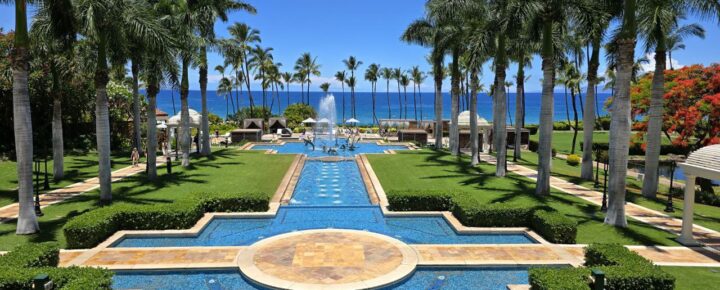
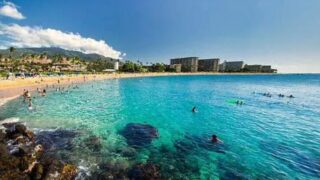
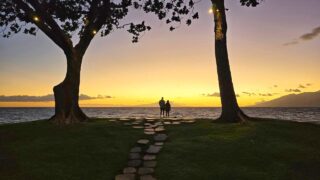
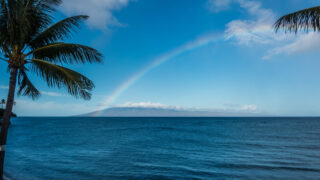
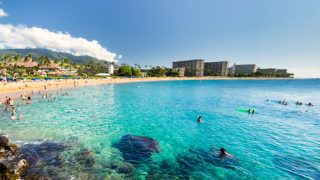
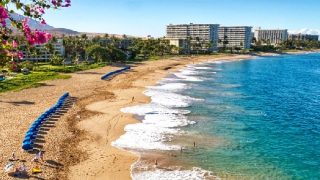
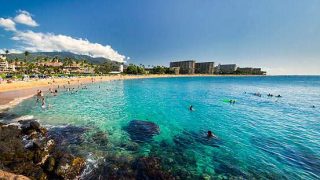
When Amfac created, built and developed Kaanapali as a destination . the hotels had employee housing. Why did it end. There are a few residentially zoned condos still within Kaanapali’s Resort.
How did tie Maui Islanders Apartments become an Outrigger Hotel.?
The private water company we have does a good job .
Great insight.
More of this kind of reporting please!
Well after reading this, no wonder the locals are not welcoming tourists. When you read about the disparity between the hotels and new housing, be it affordable or low income, and the reasons for it being stalled because of no updates water systems, the attitudes are a no brainer. Talk about being frustrated and just fed up with the extreme differences. And now that people have chosen to go to other islands or elsewhere, how are they going to fix this issue? Increasing taxes is not going to work because people are not going to come there. They already have proved that.
The same stupidity that forced laborers to ship in white sand for Waikiki is now shaping Maui’s future. Developers pick the arid leeward side to build resorts because of the sunshine, but then are forced to bring in obscene amounts of water to create artificially lush landscaping for tourists.
Here’s a novel idea: Hotels need to landscape for their existing environment, not the environment the tourists expect to see. Hotels need to replant with drought-tolerant plants and drastically reduce the amount of non-recycled water they use for landscaping.
The same goes for luxury developments. If you want a mega-mansion on arid land, do not waste scarce water resources creating a fake tropical jungle. If you want lush, move to the windward side.
How about golf courses? We are warned of a drought meaning locals can’t wash their cars on certain days etc. etc…..mixed messages by the current administration. The hotels have decimated the Iao Acquifer and now locals personally must pay? Pick a lane Mayor.
How long before Bissen discovers a potential new cash cow— a water usage surcharge! To be paid by every tourist, of course , and locals would be exempt. Tourists are expected to be the funding source for fixing Maui’s problems, so why not add this to the never ending list of taxes and fees?
Mayor Bissen says we need to “move away” from tourism. It’s not critical thinking on his part. He should read ” Ku Kanaka: Tourism is the Keeper of the Culture.” By George Kanahele. Well managed tourism will preserve Hawaiian Culture and our environment on Maui.
I don’t know why Mayor is ok with destroying tourism. It’s madness.
The problem is checks and im-balances.
Eminent domain exists precisely for such public utilities such as water resources – the vast majority of visitors I suspect would not balk at fees expressly devoted to Maui’s acquisition by eminent domain and otherwise and their development of sufficient water resources to enable sufficient housing for Maui’s workers as well as the businesses that employ them, and taxpayers would probably have a much more positive perspective on how their taxes are being used if devoted to this same purpose. As it is now, there have been numerous fees and additional taxes discussed in the name of “sustainability” but very little definition around what constructive purposes all those fees and taxes would serve – Hawai’i could do well by designating some of current collections from a general fund to something like this.
Sounds like a De-Salinization Plant is needed, or minimally something akin to Playa Del Rey’s Hyperion Wastewater Treatment Plant, which could go a step further to Drinking Water Quality! sounds like the One Party Democrat Rule, may need some free thinkers! They’re already mov8ng in this direction in San Diego County and Carlsbad, Ca..
The more I read about “visitors” and “tourism,” the more something becomes obvious. Maui local government, and Hawaii state government, is looking to blame someone, anyone, other than the government’s disastrous response before, during, and after the Lahaina fire.
These failures include: (1) during the fire, public safety employees failed to activate Maui’s sirens; (2) Maui firefighters put water on a blaze, but left the scene before it was extinguished, resulting in the disastrous Lahaina fire; (3) insufficient hydrants and water towers to fight fires on Maui — well known and documented before the Lahaina fire; (4) a failed and terrible evacuation effort by Maui first responders — watch the videos, you’ll see residents fleeing smoke and flames as government employees wasted massive time and resources with “traffic control,” which in fact made the problem worse.
In the face of all this failure, the answer is: blame tourists. Zero accountability for government.
So a private company sells its product to another company (hotel). I don’t see what is controversial about that.
The County needs to figure out how to provide the rest with water.